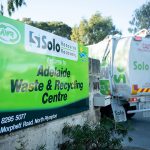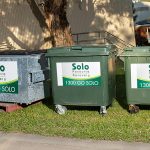What Becomes of Your E-Waste After Electronic Waste Recycling?
Electronic devices have become an essential part of life, but as technology evolves, so too does the volume of electronics that are discarded. This growing amount of electronic waste, also known as e-waste, poses environmental and economic challenges. Fortunately, these items can be diverted from landfill and transformed into valuable resources through recycling. But what takes place after you take in your old electronics for recycling? In this article we’ll explore the e-waste recycling process and explain how resource recovery works to benefit the environment and the economy.
Collection and Sorting
The process begins with collecting the e-waste and sorting it into different waste streams. The waste is sorted by type and condition and grouped based on what materials it contains, and whether it can be reused, repaired, or must be dismantled.
Sorting helps streamline the recycling process and ensures that hazardous components like batteries and screens are separated for specialised treatment. This phase also helps identify components that can be refurbished or reused, reducing the overall volume of waste that needs full processing.
Breaking Down the Devices
After sorting, the next stage of electronic waste recycling is dismantling. Workers or automated systems dismantle the devices and separate their individual components. This can include batteries, circuit boards, glass screens, plastics, and various metals.
Manual dismantling is particularly effective for complex products such as mobile phones or laptops, where precision is needed to recover valuable materials without contamination. Usually, batteries and hazardous materials are extracted first to ensure safe handling.
The dismantling process is an important step as it allows recyclers to recover high-value components and prepares the rest of the material for shredding and further separation.
Shredding and Separation
Once dismantled, the remaining components enter the shredding phase. During this part of the process, the materials are broken down into smaller fragments. This increases the surface area for more efficient sorting and helps in separating different material types.
Following shredding, a range of mechanical and chemical separation techniques are used. Magnets, eddy currents, and water separation systems help extract metals such as steel, aluminium, and copper from the mix. Meanwhile, plastic and glass are separated for their respective recycling streams.
The shredding and separation stage is key in e-waste recycling, ensuring that different materials are isolated without cross-contamination. This is crucial for maximising recovery rates and ensuring the purity of recyclable materials.
The Recovery of Valuable Materials from Electronic Waste Recycling
One of the most compelling reasons to undertake electronic waste recycling is the ability to extract valuable and finite resources from discarded electronics. Circuit boards, for instance, contain small amounts of precious metals such as gold, silver, and palladium; wires and cables yield copper, while plastics and glass can be reprocessed for new uses.
The recycling process allows these materials to re-enter the manufacturing chain, reducing the need for raw material extraction. This helps to conserves resources while reducing energy consumption and the environmental damage that is associated with mining.
Recovered materials are sold to specialised processors or reintroduced into local manufacturing industries. This highlights the economic benefit of e-waste recycling and supports the principles of a circular economy.
The Environmental and Economic Impacts
Electronic waste recycling produces significant positive impacts. Environmentally, it diverts toxic substances from landfill and reduces the pressure on natural resource extraction. Economically, it generates employment in the recycling and resource recovery sectors and reduces manufacturing costs by supplying recycled raw materials.
The recycling process is designed to not only manage waste but to also create value from it. By reclaiming metals and plastics, electronic waste recycling turns what was once considered rubbish into assets. This process supports innovation in recycling technology and promotes more sustainable consumption habits.
Increased awareness and participation in e-waste recycling helps keep harmful materials out of the environment and contributes to a greener economy.
The Role of Consumers in Electronic Waste Recycling
The effectiveness of electronic waste recycling begins with individual actions. Consumers play a critical role by ensuring that their old electronics are disposed of responsibly. Dropping off items at certified recycling centres such as the Adelaide Waste and Recycling Centre is the first step.
Public awareness campaigns and community collection events help reinforce the importance of e-waste recycling, making it easier and more convenient for households and businesses to participate.
By understanding how the recycling process works, consumers can feel more confident that their efforts are making a tangible difference.
In Conclusion – What Becomes of Your E-Waste After Electronic Waste Recycling?
The journey of e-waste is far more complex and valuable than many realise. From sorting and dismantling to shredding and material recovery, each stage of the recycling process plays a vital role in turning waste into wealth. E-waste recycling not only conserves resources but also helps protect the environment and supports the economy through material recovery.
As technology continues to advance, so will the need for efficient and responsible management of electronic waste. By understanding what happens behind the scenes, we can all take a more active role in supporting sustainable practices.
Drop off Your E-Waste at the Adelaide Waste and Recycling Centre
Don’t let your old electronics go to waste – drop them off at Adelaide Waste and Recycling Centre. By participating in electronic waste recycling, you’ll help protect the environment and contribute to a cleaner future. Pay us a visit or contact us to learn more about our e-waste recycling services.
Adelaide Waste and Recycling Centre
Our friendly operators are available at the AWRC if you need to clarify any further information.


